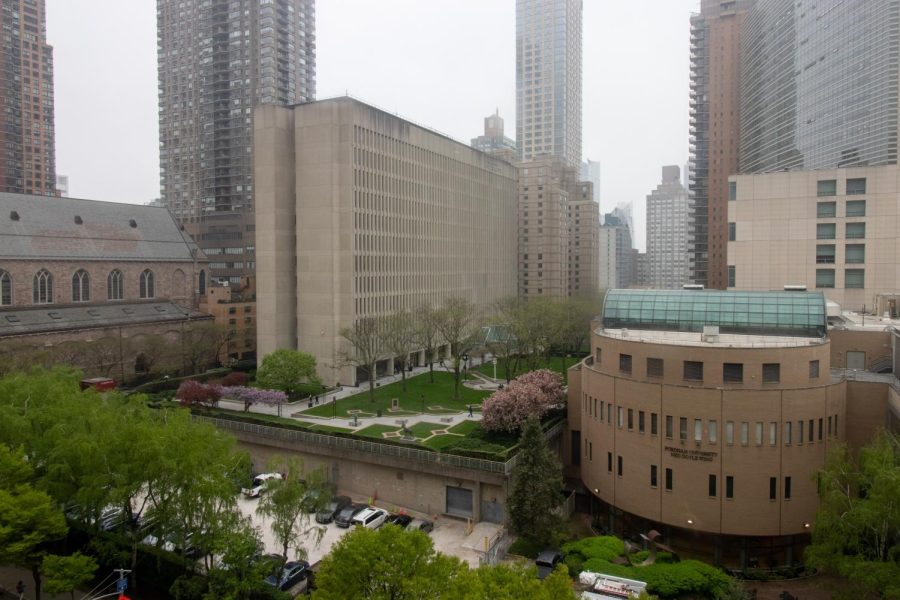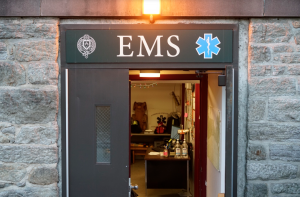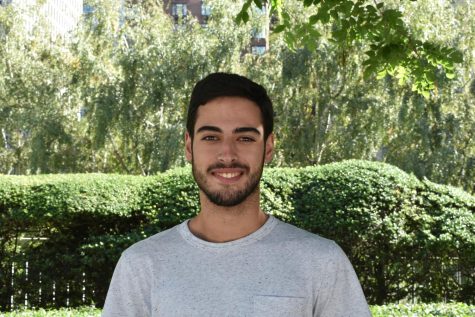Plans to Expand FLC Campus Are ‘Still Possible’
While the blueprint has not been finalized, the proposed construction aims to solve housing shortages and grow the Lincoln Center campus by 2032
The FLC expansion plans include new buildings in place of the parking lot on Columbus Avenue and the 140 West 62nd street building.
April 19, 2023
CORRECTION: A previous version of this article specified that the glass case displays a proposal titled “The Brick.” As of April 20, this article has been updated to reflect that the proposal is not titled “The Brick” but is a component of a display referred to as “The Brick,” which is a joint effort between different librarians and faculty members.
On the third floor of Quinn Library is an exhibit titled “The Brick,” a joint effort between different librarians and faculty members. The glass case displays a proposal from 2009 to expand Fordham’s Lincoln Center (FLC) campus. The plans would replace the current 140 West 62nd Street Building and the campus’ parking lot with two additional buildings intended to serve the Gabelli School of Business and the Graduate Schools of Education and Social Services.
These renovations were originally expected to be completed by 2032. Although they are not being pursued currently, they remain a possibility, according to Marco Valera, vice president of administration.
The plan outlines increased dormitory space to combat persistent issues with overcrowding; a student center located where McMahon Lawn is; and a new library near McKeon Hall in place of Quinn.
The original plans are yet to be approved by the board of trustees because the designs are still being finalized. The city had approved zoning for the construction in 2009, but currently there is no set timeline, budget or funding sources for the expansion.
According to Valera, every aspect of the proposal remains a possibility. The original plans are yet to be approved by the board of trustees because the designs are still being finalized. The city had approved zoning for the construction in 2009, but currently there is no set timeline, budget or funding sources for the expansion.
Fordham is still considering building additional dorms on the upper floors of the new buildings. Valera pointed to the first-year dorms above the Law School as an example of how the potential new mixed-use buildings would look if constructed. A new, taller building similar to McKeon Hall could also be built to house the business school.
“Typically for major construction projects, universities, including Fordham, depend on three major funding sources: donations from donors, construction loans and, sometimes, government grants,” Valera said. “With new construction at Fordham College at Lincoln Center (FCLC) it is expected that increased housing and growth of the student (body) would offset the costs of the loans over time.”
The vice president for administration added that Fordham’s leadership and the board of trustees plan to revisit construction at Lincoln Center in about seven years. He shared that the timeline also depends on economic conditions, emphasizing that construction costs have risen astronomically, slowing down projects.
Students revealed mixed reactions to the proposal, with some sharing excitement at the prospect while others reported feelings of dismay at the possible loss of campus hot spots.
The university has seen an increase in demand for housing on campus in recent years with growing class sizes. The Lincoln Center campus especially has reported struggles with its ability to house students who have applied for on-campus living.
“(The proposal) makes sense,” Suchi Jalavancha, Gabelli School of Business at Lincoln Center ’25, said. “Everything is crammed all of the time, and there’s not a lot of space to exist on campus.”
The university has seen an increase in demand for housing on campus in recent years with growing class sizes. The Lincoln Center campus especially has reported struggles with its ability to house students who have applied for on-campus living.
Abby Wilson, FCLC ’25 and an urban studies minor, explained that the new plan could help resolve issues with housing overcrowding but weighed the potential downfalls as well, one of them being accessibility for disabled people. She also wondered whether investments would be allocated for buildings dedicated to the liberal and performing arts.
“I’m interested to learn more about their developments for the arts and theater departments,” Wilson said.
The current 140 West 62nd Street Building is also home to Argo Tea, a favorite among Fordham community members. Students shared disappointment regarding the possible closure or relocation of the community hub.
For Kenza Zemzami, FCLC ’25, Argo Tea was her safe space when she was a first-year, and even as a commuting sophomore, she often comes to visit.
Valera noted that the proposal for FLC’s expansion will be revisited upon the university’s completion of outstanding projects at the Rose Hill campus.
Employees of Argo Tea “represent the community,” Zemzami said. “You can ask any freshman — they’ll tell you how much they love (Argo).”
Anissa Quartaro, FCLC ’26, often enjoys drinks and treats at Argo. She believes the reconstruction plans are not necessary.
“I like that it’s a small school — we don’t need more dorms. I don’t think Lowenstein can support more students,” Quartaro said.
Valera noted that the proposal for FLC’s expansion will be revisited upon the university’s completion of outstanding projects at the Rose Hill campus. He cited that one of these projects includes the construction of a science facility due to the growing interest in related subjects among incoming students and that, upon the completion of the science facility, the plan is for the redevelopment of sites at FLC to come into greater focus.











